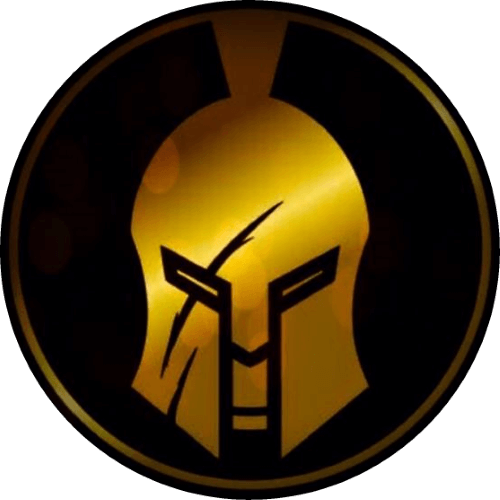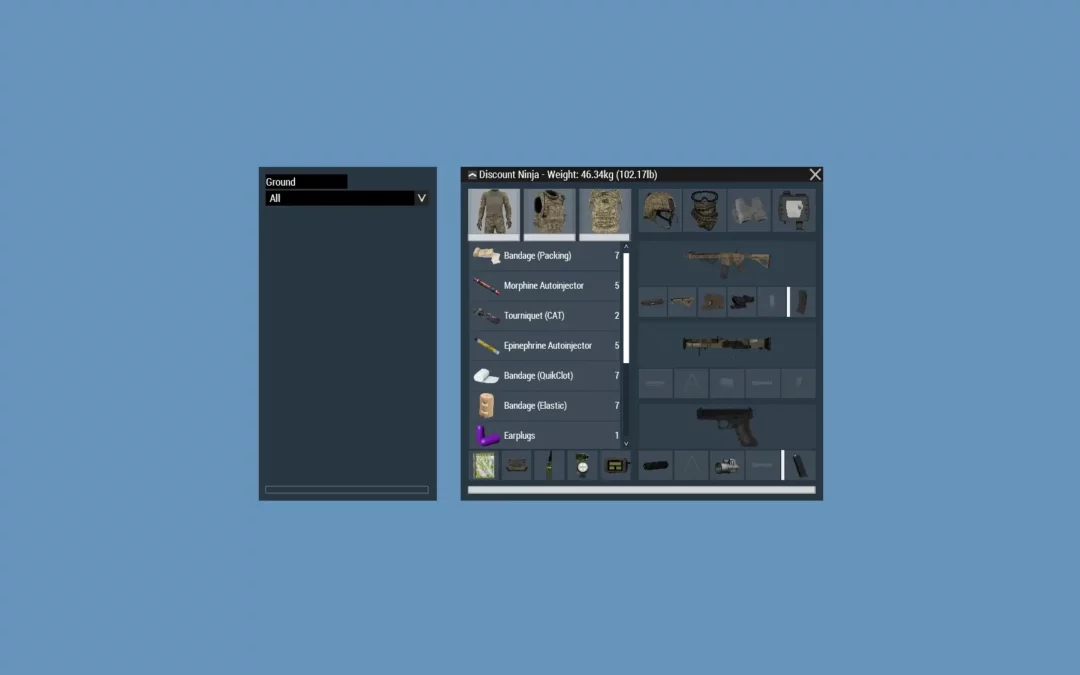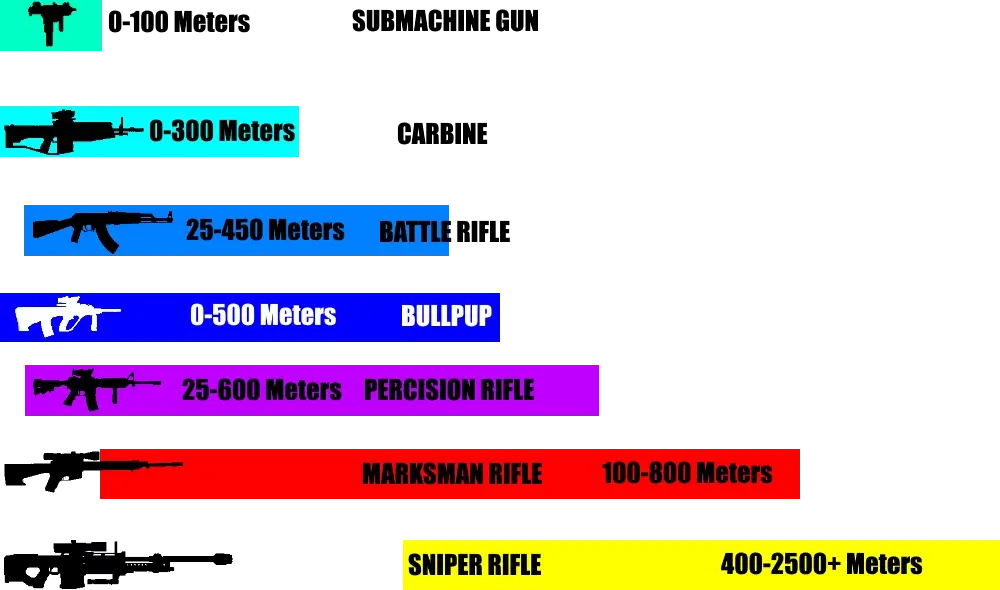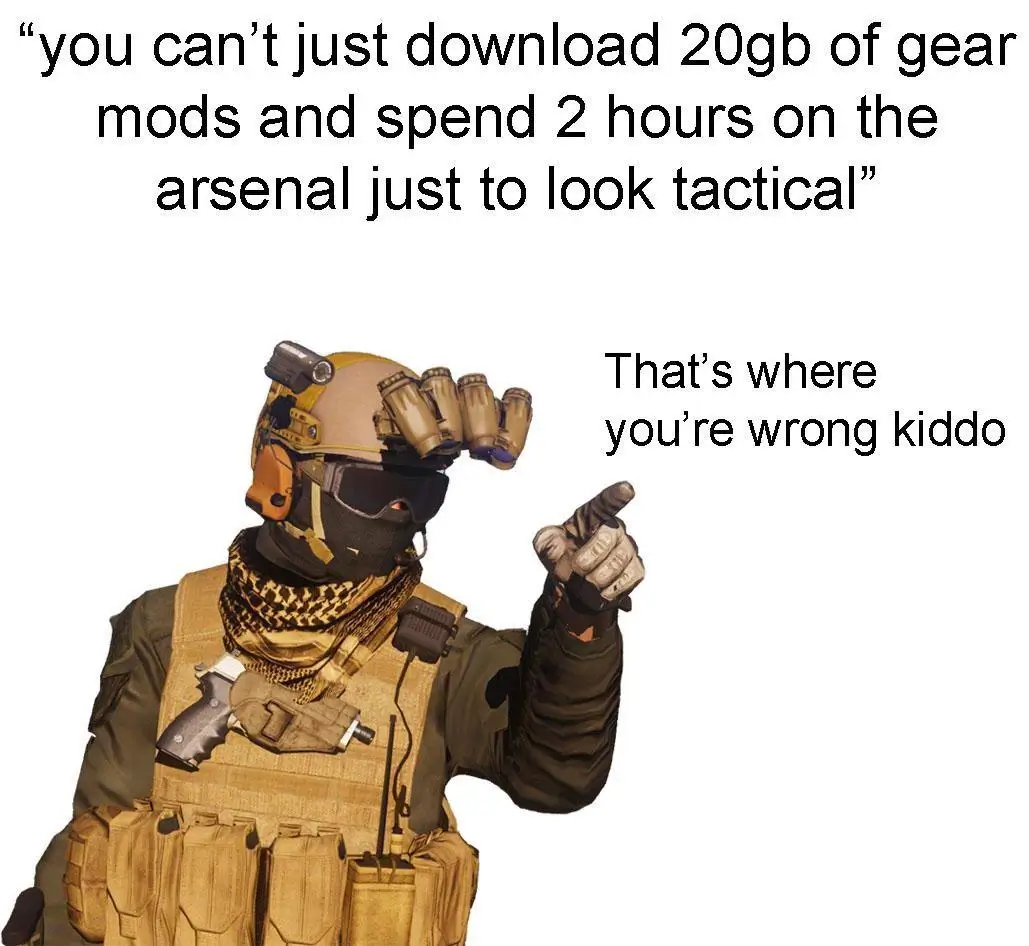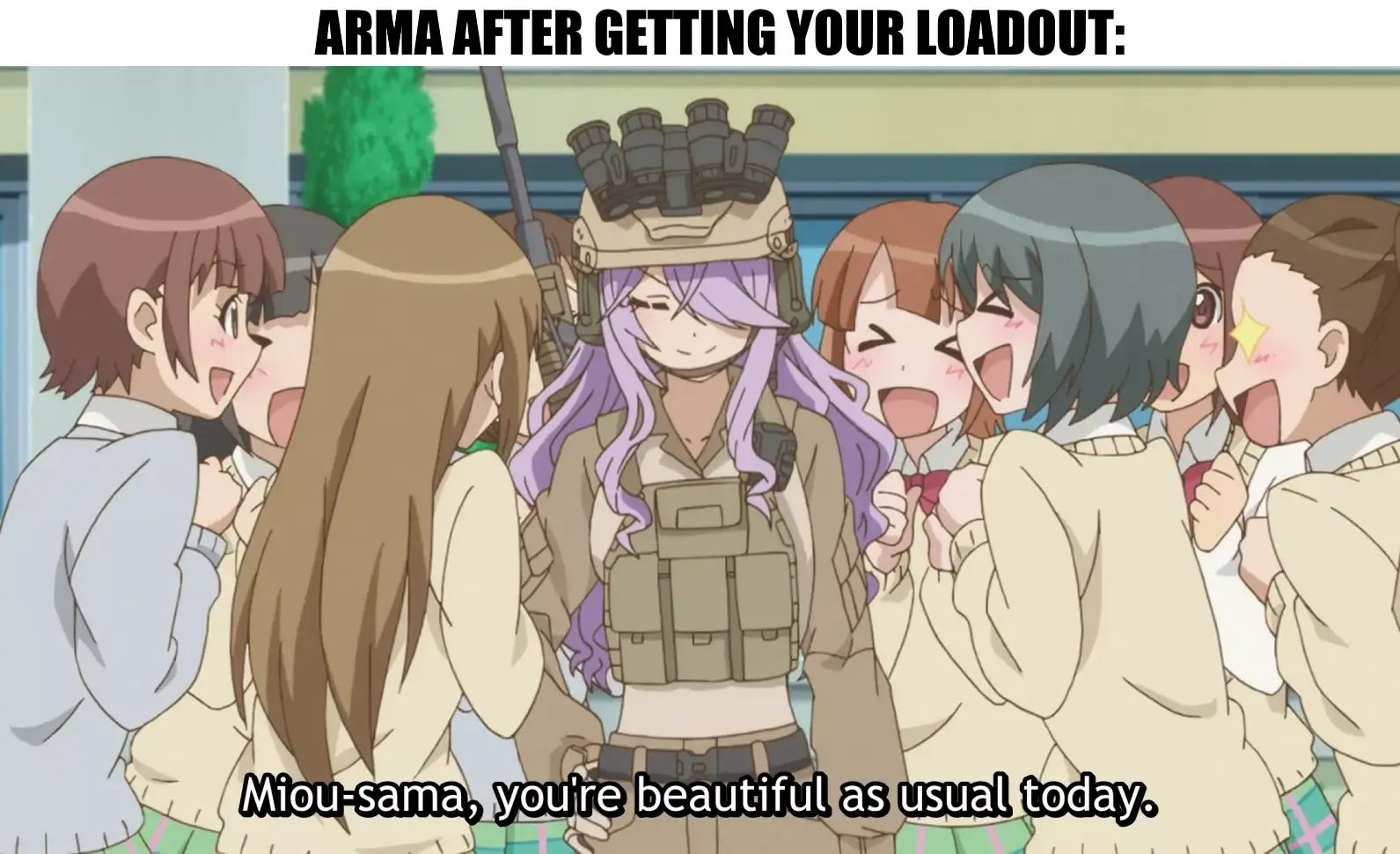In general, your chest rig should be 80% mags for your primary weapon, the other 20% should be grenades or batteries. Your uniform should have as many FAKs (First Aid Kits) or bandages as possible. Your backpack should contain mission-specific and role-specific gear.
While that’s the general loadout, the weapon selection can be more important. The wrong weapon can be a massive disadvantage or give you an unfair advantage.
Weapon Selection
The chart I made isn’t set in stone, but a general guide. Large rifles can be difficult to maneuver in cars and around tight spaces. I’ll explain what the chart is supposed to convey.
Submachine guns or machine pistols are rapid-fire, compact defensive weapons. The gold standard would be a Kriss Vector. These guns fire pistol-like rounds like a basketball, they have a large arch and start to drop off a lot after 100 meters.
Carbines are smaller caliber rifles that can still fill a battle role. The gold standard would be a P-90. Carbines are a good role for everything but long-range engagements that wear good armor. Despite the weaknesses, they handle better when fully auto than any other group on this list.
Battle rifles are your main weapon of choice for most engagements. The gold standard would be the Avtomat Kalashnikov Model 47 (AK-47). The only issue is extended ranged battles could lead you to trouble. Low training needed point ‘n’ shoot.
Bullpups seem to have the best of both worlds, being compact with firepower and range. But they often have no recoil reduction and take a lot more training to use properly. The gold standard would be the Steyr Aug.
Precision rifles are a type of battle rifle with an emphasis on ease of use and accurate fire. Modern variants are very customizable with a wide range of features for any situation. The Gold standard would be the MK18.
Marksman rifles are a slight step up from precision rifles, with more punching power and accuracy with a slower rate of fire. These are still effective close range, but can be less effective without training. Marksman rifles are all semi-automatic, if they are bolt action it’s a hunting rifle.
Sniper rifles sacrifice everything for range and accuracy. They require a scope to be useful at long ranges (Usually). These require the most training to use effectively. As for a gold standard for the Marksman and Sniper rifle? There’s just too many good ones.
I should note that not all guns fit in those categories. Given this short introduction into firearm types, you should be able to pick out the best gun for your operation.
Then again, I know someone who prefers to be on the breaching team with an M1 Garand. The mad lad is good at it, too, puts people with a submachine gun to shame. So whatever works for you, but generally full automatic guns work better in close quarters.
Hurry up! Get your loadout!
Tactical dress-up is a real thing. I’ve seen a lot of ops start very late because there’s still many people still playing dress-up.
Well, it DOES matter. A note on uniforms. There are three grades of clothes you can use for the AI to spot you. Each with their own level of stealth.
- Civilian clothes (Least stealthy)
- Military Uniform (Some stealth)
- Ghillie suit(Most Stealth)
Accessories
Face gear is mostly for tacti-cool unless you need the gas mask or need thermal stealth.
Night Vision should be as good as your operation or mission allows.
I always recommend taking a range finder or laser designator. Critical for accurate shots.
Map: Always
GPS: UAV terminal is preferred, but a normal GPS is fine if you need to save weight.
Radio: Always
Compass: Always
Watch: Yes, the altimeter (ace) and the chemical detector (Contact DLC) are also useful.
The person most upset about his load out weight is also the most happy during an engagement.
